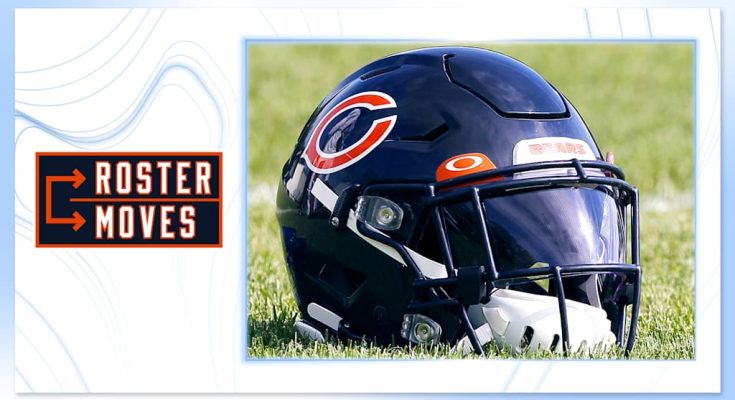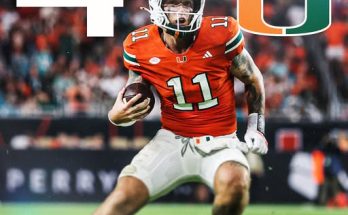The Chicago Bears have made early waves in their preseason preparations by placing four players on the Non-Football Injury (NFI) list, a move that, while not uncommon in the NFL, has prompted speculation and debate among fans and analysts about what it means for the team’s plans heading into the 2025 season. The players—rookie wide receiver Keon Coleman, linebacker Noah Sewell, tight end Brenden Bates, and safety Tarvarius Moore—each have their own set of circumstances, and the team has remained mostly tight-lipped regarding the specifics of their injuries. This decision raises questions about roster depth, offseason conditioning programs, and the Bears’ long-term development strategy, especially as they aim to rebound from another underwhelming season. With expectations higher than they’ve been in years, every development, particularly one involving young contributors or depth players, becomes magnified.
Placing a player on the NFI list means the injury occurred away from team-organized activities, such as workouts or practices, and it grants the team the option to withhold the player’s salary during the time they are inactive. The designation is an administrative tool used frequently in the preseason to manage rosters while players recover, but it also reflects the delicate balancing act NFL franchises must perform. Coaches want players to stay active and prepared during the offseason, but the moment something goes wrong offsite—whether it’s a gym injury, a pickup basketball game gone awry, or even a non-athletic accident—the ramifications can be significant.
Keon Coleman’s placement on the list is perhaps the most eye-catching. The Bears selected him with high hopes that he could become an impact player in their evolving offense, one that is being tailored to maximize the skills of quarterback Caleb Williams, the franchise’s most anticipated rookie signal-caller since the Jay Cutler era. Coleman, a physical receiver known for his contested catch ability and red zone threat, was expected to be a key figure in helping Williams transition to the professional game. Missing any time in training camp could delay the crucial chemistry that needs to be built between a young quarterback and his receiving corps. It’s unclear how severe Coleman’s injury is, or whether it’s merely a procedural move to ease him into the rigors of camp, but Bears fans and coaches alike will be keeping a close eye on his progress.
Linebacker Noah Sewell represents another intriguing case. The Oregon product flashed promise last year as a rotational linebacker and special teams contributor. His athleticism and instinctual play style made him a favorite among Bears supporters who saw in him the potential for long-term development into a starting-caliber player. However, this stint on the NFI list may put a dent in his momentum. Linebacking depth is something the Bears have tried to shore up, and the competition is stiff. For a young player trying to carve out a larger role, missing even a few weeks could mean the difference between getting valuable reps and slipping down the depth chart. Given Sewell’s pedigree and work ethic, there’s optimism he’ll bounce back quickly, but nothing is guaranteed when it comes to NFL roster spots, especially in a linebacker room filled with hungry, unproven players looking to make their mark.
Brenden Bates, a tight end out of Kentucky, is perhaps the least-known name among the four, but that doesn’t mean his absence is without significance. Tight ends in the Bears’ system are expected to be versatile, contributing in the blocking game as well as serving as reliable check-down options. With Cole Kmet established as the clear number one, Bates was likely vying for a depth or practice squad role, a path many players have taken to eventually carve out real NFL careers. Missing time during camp, however, hampers his ability to showcase his talents, especially in a position group that often requires nuanced understanding of blocking schemes and timing in route trees. The NFI designation may also suggest a training mishap or other off-the-field issue that could impact his trajectory.
Then there’s Tarvarius Moore, a veteran safety who joined the Bears looking to solidify the back end of their defense. Moore has been in the league since 2018 and was expected to bring experience and depth to a safety unit that has been inconsistent at times. For a player of Moore’s experience, the NFI list is more than a procedural hiccup—it could be a precarious career moment. Veteran safeties often rely on camp to establish trust with defensive coordinators and show they can still cover ground, tackle in space, and read offenses at a high level. At this stage in his career, any missed time could be costly, especially with younger, cheaper alternatives waiting in the wings. While the team has given no indication that Moore’s injury is career-threatening, it does put him in a difficult position at a critical juncture in his tenure with the Bears.
The timing of these placements is also worth discussing. With training camp underway and preseason games on the horizon, players on the NFI list can be activated at any time, but the longer they remain inactive, the more opportunities they lose to stake their claim on the roster. The Bears are entering a crucial phase where new schemes are being implemented, especially on offense under a new coordinator looking to unlock Caleb Williams’ full potential. Every practice rep, every team meeting, every moment of install time is valuable. It’s not just about physical readiness; it’s about mental sharpness and understanding the intricacies of the system.
Head coach Matt Eberflus has repeatedly emphasized competition and accountability during his time in Chicago, and this offseason has been no exception. Players are being asked to buy in at a high level, and the margin for error is razor-thin. For someone like Keon Coleman, whose long-term future with the team is relatively secure, the NFI list might simply be a way to prevent pushing too hard, too soon. But for players like Bates or Moore, the decision carries higher stakes. The Bears coaching staff will have to evaluate whether these players can quickly recover and get up to speed, or whether they need to start considering alternatives.
One thing to keep in mind is that the NFI list doesn’t necessarily spell doom for a player’s season. In many cases, players return within a matter of days or weeks and go on to contribute. It’s possible that all four players will be activated before the end of camp and enter the season fully healthy. But in a league where perception and opportunity matter just as much as talent, the optics of starting camp on the sideline are never ideal. This is especially true for a team like the Bears that is trying to build a winning culture, establish new norms, and shake off years of underperformance.
Additionally, the context of Chicago’s broader roster construction adds layers of complexity to these developments. The Bears have made it clear that they are in the midst of a multi-phase rebuild, one accelerated by the drafting of Williams and a series of aggressive offseason moves. There’s pressure from ownership, the media, and the fan base to show tangible improvement this season. General manager Ryan Poles has talked openly about building a sustainable contender, and part of that involves making tough decisions about which players can be counted on, both physically and mentally. A player’s injury history—even one involving a non-football incident—can influence those evaluations.
In the modern NFL, conditioning and injury prevention have become science-driven pursuits. Players work with personal trainers, nutritionists, sleep specialists, and mental health coaches during the offseason. Despite all these advancements, injuries still happen, and when they occur away from team facilities, the stakes can be higher. It’s a reminder of how fragile a player’s standing can be, especially on a team trying to climb out of the cellar.
There’s also the looming reality that for every player placed on the NFI list, another is getting more reps, more exposure, and a better chance to make the team. Roster battles in training camp are fierce, and for younger players or journeymen hoping to land a spot, every snap matters. Injuries open doors, and in a business driven by results and competition, someone else is always ready to walk through.
For now, Bears fans will have to monitor updates and hope for quick recoveries. The team’s communications staff and coaching personnel have been tight-lipped, offering only broad confirmations without revealing the nature or expected duration of the injuries. That’s standard operating procedure in the NFL, where information is often treated as competitive advantage. Still, the silence leaves room for speculation, and until more concrete updates are available, the questions will persist.
Whether these NFI designations end up being footnotes or turning points in these players’ careers remains to be seen. What is clear is that the Bears, like every team, are walking a fine line between preparation and preservation. They want their players to be ready, to be in peak condition, and to hit the ground running. But they also want to avoid long-term setbacks, and that sometimes means being cautious. For Keon Coleman, Noah Sewell, Brenden Bates, and Tarvarius Moore, the next few weeks will be critical—not just for their health, but for their place in a franchise hoping this is finally the year they turn the corner.



